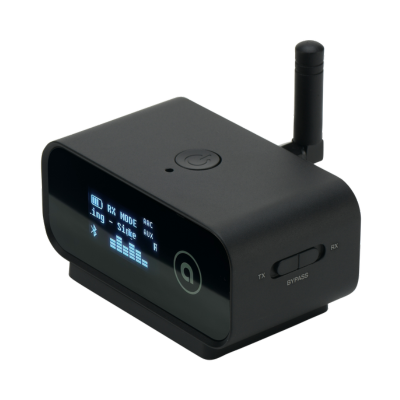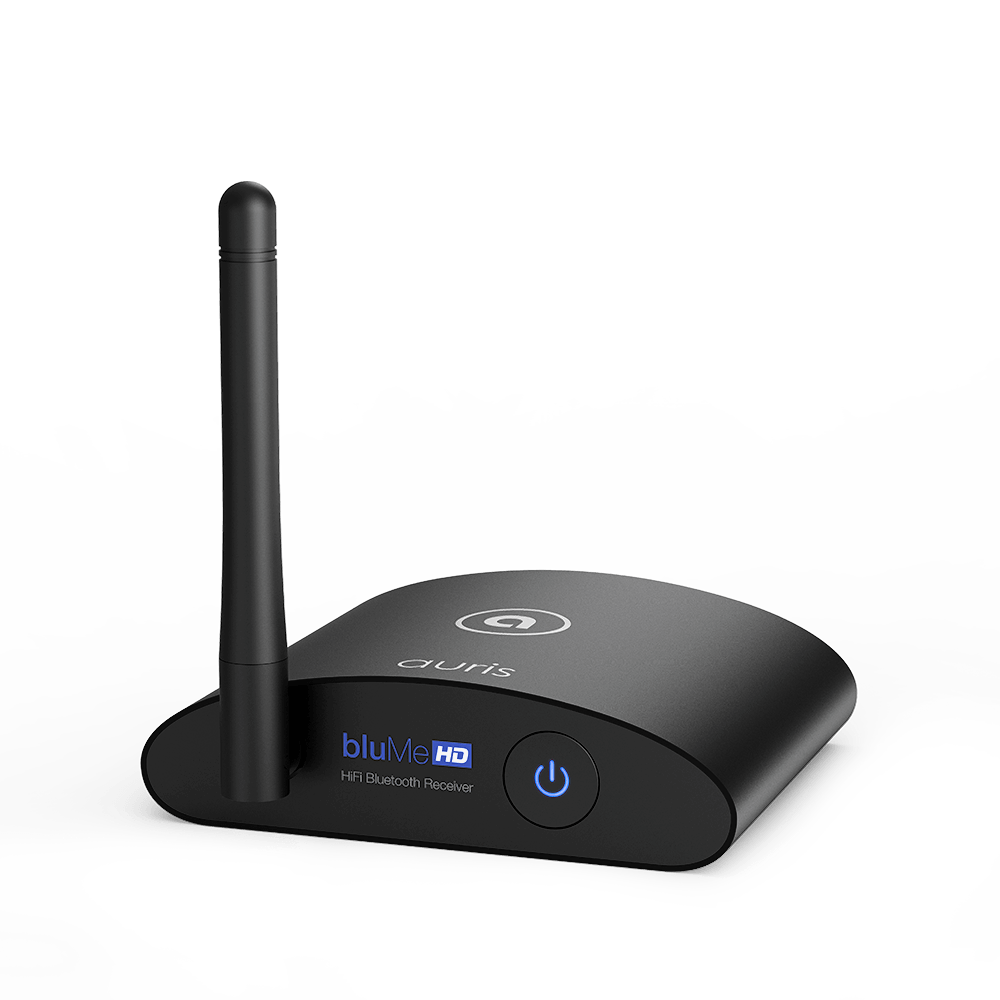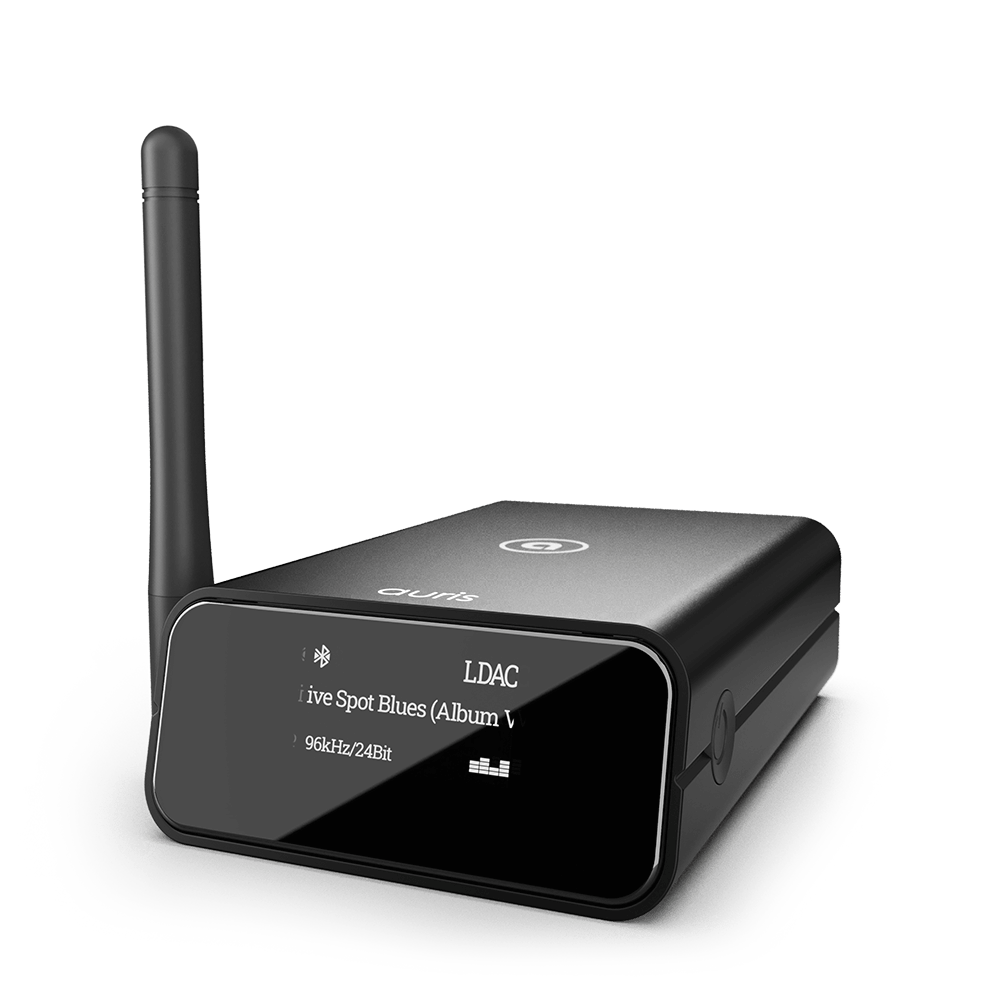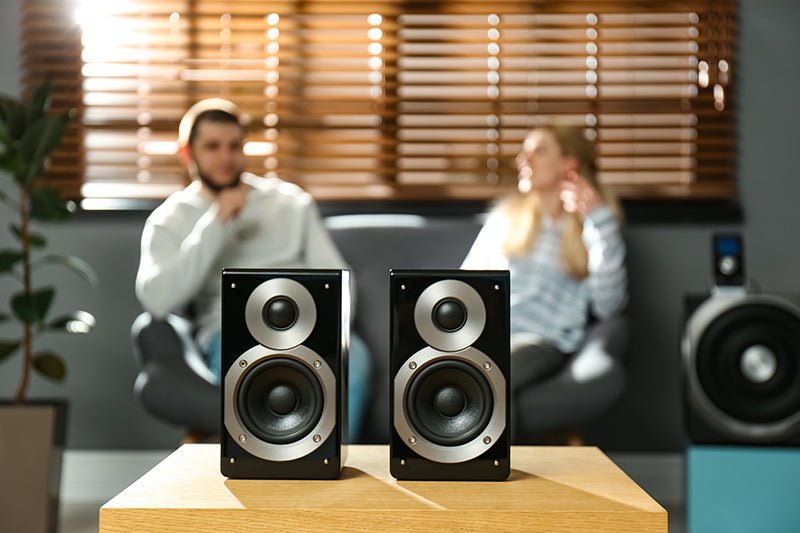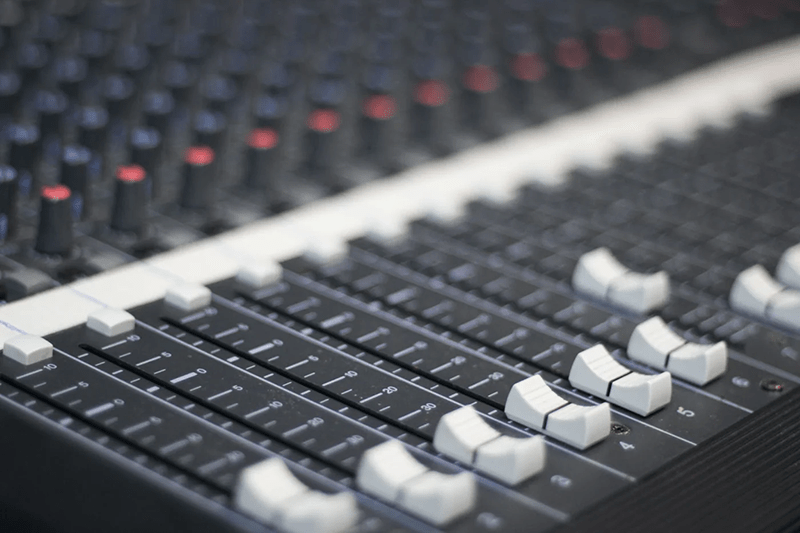
While most of us may not pay attention to the quality and speed of our Bluetooth devices, these factors can impact the crispness of our music. Especially if you consider yourself an audiophile, the audio codec used in your device is paramount for being able to fully appreciate a device.
Even though there are many of us who don’t even know what a codec is, it’s an important thing to consider before purchasing Bluetooth devices to ensure that they’ll be able to do everything you need.
Let’s take a look at two of the most popular audio codecs in Bluetooth, SBC and aptX, so we can compare their features and benefits.
Table of Contents
- What is A Codec?
- Understanding Bluetooth And Bandwidth
- What Is The SBC Codec?
- What Is aptX Bluetooth?
- Sound Quality: SBC vs aptX
- Latency: SBC vs aptX
- Compatibility: SBC vs aptX
- Are There Any Other Bluetooth Codecs?
What Is A Codec?

If you’re not well-versed in the world of sound terminology, you may not have much of an idea of what a codec is.
A codec is a device or program that compresses data for transmission and decompresses the received data. Basically, it’s a way of being able to transfer data quickly and efficiently from one location to another.
There are multiple types of codecs, and they each can have an effect on the original quality of an audio source.
For example, lossy audio is a compression technique that does not decompress audio files to their original file size. This is a great way to compress many audio files into a smaller storage space, but it results in a lower quality sound.
Compare this to lossless audio, which decompresses audio files to their original data amount after having been received. This is ideal for professional audio settings and is able to output high fidelity sound that most audiophiles love to hear. FLAC and ALAC are popular lossless formats.
Finally, there is uncompressed audio, in which the quality is neither decompressed nor compressed, allowing the audio to sound the same as when it was recorded. PCM and WAV formats are examples of uncompressed files.
Lossless and uncompressed audio formats are possible through a wired connection, which allows for more secure and bulky data transmission than wireless devices. However, at least at present, it’s nearly impossible — to transmit uncompressed, lossless audio wirelessly.
Because of that, Bluetooth must use alternative methods to maintain quality sound without too much of a delay. Let’s talk more about why that is.
Understanding Bluetooth And Bandwidth

Bluetooth uses low-power radio waves to allow devices to communicate with each other. These radio waves constantly jump from one frequency to another within a set range to maintain the security of the connection.
The information that gets sent back and forth across those radio waves is broken up into pieces called “packets.” The packets can contain text, images, or audio.
There’s a limit to how much data can be sent through those radio waves at one time, however. This is partially because Bluetooth radio waves are designed to be low-power so they don’t rapidly drain device batteries.
Think of the radio waves being transmitted between Bluetooth devices as an invisible hose, and the data riding those waves as water. You can only push so much water through the hose within a certain period of time.
This upper limit on how much data can be transmitted is often called bandwidth. Another name for it is throughput. You might also see this concept expressed in terms of transfer rate or bitrate: the amount of data that can be sent through the Bluetooth connection in kilobytes per second (kbps).
When more data gets sent through the Bluetooth connection than the radio waves have the bandwidth to carry, it can result in annoying stuttering or a disconnect.
Current Bluetooth standards, even the latest Bluetooth 5.3, don’t have the throughput to transmit uncompressed, lossless audio.
This is where codecs come into play. The codec determines the method and quality that will be used to transmit audio from the source device to the receiving device via the Bluetooth wireless connection.
What Is The SBC Codec?
SBC stands for Sub-band Coding. It is the mandatory and default codec for all Bluetooth headphones with an Advanced Audio Distribution Profile. It has a pretty decent audio quality without needing too much processing power to encode or decode the source files.
However, the quality can be inconsistent at times. This inconsistency is mostly noticeable in the form of an audio delay between the master Bluetooth device and its peripherals. These delays affect latency, the amount of time it takes data to be transmitted from one Bluetooth device to another.
SBC operates at a latency of between 170 and 270 milliseconds. There are 1000 milliseconds in a second, so we’re talking about a delay of one or two tenths of a second. Doesn’t sound like much, does it? Well, that depends.
While this much of a delay might not be noticeable when listening to music, it is extremely noticeable when watching a television show or movie, as the character’s dialogue will be out of sync with their mouths.
With that said, this is a standard codec for the majority of Bluetooth devices. SBC serves the purpose of being a baseline “fallback” standard that can be relied on to function if no other codecs are available.
What Is aptX Bluetooth?
This is an optional codec for some Bluetooth devices. aptX Bluetooth is actually a family of audio codecs created by Qualcomm, a multinational wireless technology company that also makes components for smartphones and other devices.
It’s ideal for demanding audio applications, as it is able to encode and decode more efficiently than SBC. It has much lower latency than SBC as well, meaning that syncing issues are not as common.
Although many devices can use aptX Bluetooth codecs, they are technically proprietary Qualcomm codecs. The proprietary nature of some more advanced codecs is what makes universal “default” standards like SBC necessary.
Importantly, there are two common subdivisions of aptX: aptX HD and aptX low latency.
aptX HD
The HD version of aptX focuses on heightening the audio’s quality. aptX HD operates with 24-bit wireless tech to give some of the highest consistency sound possible in a Bluetooth device.
Compared to the SBC codec’s maximum transfer rate of 320kbps, aptX HD has a maximum transfer rate of 576kbps. Being able to push more data through the Bluetooth connection gives aptX HD the ability to reproduce sound with greater fidelity.
It’s the closest you can get to high resolution audio without using a wired source.
aptX Low Latency
While the goal of aptX HD is to reproduce audio with the best and most consistent quality, aptX Low Latency has a different purpose.
aptX low latency focuses on lowering the latency, or synchronization delay, that is common among Bluetooth peripherals. It improves end to end speed of audio transmission, virtually eliminating lip-syncing issues on screen.
Sound Quality: SBC vs aptX

Two of the main factors that determine the sound quality of digital audio are also main factors in determining how much bandwidth it takes to transmit that audio through a Bluetooth connection: frequency response and bit depth.
Frequency response is the ability to reproduce highs, lows, and everything in-between accurately and in the correct proportion to each other so that bass notes don’t lack resonance and high notes don’t screech.
Bit depth is a bit more technical, but in essence, it’s a way of measuring the “resolution” of the audio. In an image, higher resolution allows an image to be sharper and capture more detail. In the same way, higher bit depth allows more detail to be reproduced in audio.
So how do SBC and aptX compare on these two fronts?
In terms of frequency response, both SBC and aptX are very similar. In terms of bit depth, aptX is the clear winner, with a 24-bit depth compared to SBC’s 16-bit.
But how does that actually come across when you’re listening?
Although Bluetooth devices aren’t able to replicate the same quality sound as most wired systems, you can get pretty close depending on which codec you utilize.
The standard versions of both SBC and aptX have a sound quality that is extremely similar, meaning that untrained ears aren’t very likely to notice a difference.
However, if you frequently listen to music or make a living revolving around sound, you’ll definitely notice a difference in quality when aptX HD is introduced.
Of course, the device that’s receiving the Bluetooth transmission and playing the audio makes a difference as well. With cheap earbuds, SBC and aptX Bluetooth might sound indistinguishable from each other, but with high-quality headphones, the difference becomes more noticeable.
Qualcomm, the company behind aptX, claims that their codec can achieve near CD quality, which is perfect for people who really care about the way their music sounds.
Since aptX HD was engineered with audio quality in mind, it is able to get much closer to uncompressed sound when compared to SBC. So, in short, aptX has a better sound quality, but only when the product uses aptX HD.
Latency: SBC vs aptX

It can be extremely frustrating to watch a show when all of the sound is the slightest bit out of sync. This is a common occurrence when wireless speakers are used to transmit Bluetooth audio from a television or projector screen.
As we previously mentioned, SBC has a latency between 170 and 270 ms, making sync delay entirely possible. But the standard version of aptX has a latency of only 60-80 ms, which makes out-of-sync sound a lot less noticeable.
But even at 60-80 ms, those with trained eyes will be able to notice a bit of a delay. This is where aptX low latency can shine because it was designed to decrease audio delay. AptX low latency has an improved latency of just 30-40 ms, making out of sync lips virtually non-existent.
A high bitrate code is going to help you out here as well. Remember from earlier in the article that a bitrate is how much audio data your device can transfer per second via Bluetooth — a high bitrate is going to give you higher sound quality but less compression, and vice versa.
SBC has a low bitrate code — in fact, one of the lowest out there. In contrast, aptX has a much finer bitrate, meaning that everything can continue running smoothly to keep your sound crisp and clear.
So if you’re one to use wireless speakers to watch different forms of entertainment, a device that utilizes aptX low latency from Auris is definitely the way to go.
Compatibility: SBC vs aptX
While aptX has some features that are missing in SBC, keep in mind that it’s a newer codec by comparison. Because of this, you may notice that some devices are not compatible with one another, as one may not operate using aptX.
Recall that we also mentioned earlier how aptX (in all of its forms) is a proprietary codec created by Qualcomm. Being proprietary means it’s protected by certain patents and licensing agreements. Not just anyone can use aptX for whatever they want.
Since SBC is the default codec, it is also the most commonly used. This means you’re more likely to find two products compatible with one another if you were to focus your peripherals on SBC rather than another codec.
With that in mind, this usually isn’t too much of an issue, and the newest version of Android even lets you change the Bluetooth codec within the settings.
Are There Any Other Bluetooth Codecs?
While SBC and aptX are definitely the most widely used codecs, it doesn’t mean you might not see others labeled on your compatible devices.
Another fairly well-known codec is AAC (Advanced Audio Coding). This is a lossy audio perfect for smartphones because of the small file size that it transmits after compression. AAC is the license-free standard used by YouTube and by Apple devices like iPhones and iPads.
(You may have also heard of AAC in discussions of audio file formats. This is because Apple also uses the name AAC for the compressed file format it uses for audio content. Yes, it’s confusing.)
While it won’t provide the same quality as a wired connection or aptX HD, AAC is still a pretty decent way for audio to be transmitted.
Sony has also created its own wireless audio codec called LDAC,which is capable of transmitting high resolution enhanced wireless data. Originally, LDAC could only be used on Sony products, but it’s now included in basically all Android phones.
LDAC maintains maximum bit depth and frequency range during transmission, making for an extremely high-quality listening experience. It can transmit about three times the data as SBC, at least in theory.
However, you may have to fiddle with your phone’s settings to actually achieve better results than what SBC can deliver, and not all phones handle LDAC equally well.
LC3 is a relatively new codec created by the Bluetooth Special Interest Group, the organization that oversees improvements to the Bluetooth standard. It’s supposed to be more power-efficient to preserve the battery in smartphones and headphones while still retaining decent quality.
LC3 is supported in Windows 11 and n
The Final Verdict

While Bluetooth technology is an all-around necessity for modern living, certain audio codecs might be more suited to personal preferences. SBC and aptX are the most widely used codecs for wireless technology.
Despite being less compatible, aptX is a bit better than SBC purely because it has been crafted with certain limitations in mind. Regardless, you can experience the enjoyment of wireless technology with either of these codecs.
Bluetooth audio receivers from Auris support SBC, aptX, and AAC codecs, as well as LDAC on the bluMe Pro, so that you have a range of options for optimum quality and compatibility.
As more people use Bluetooth devices to enjoy audio content, new codecs are being developed to strike a better balance between quality and bandwidth consumption and push the boundaries of what’s possible with wireless audio transmission further.
As these new codecs gain wider adoption and other new ones are developed, the experience of enjoying audio content via Bluetooth will continue to get better and better. Here at Auris, we’ll continue working to bring you the convenience of wireless audio without compromises.
Sources:
Web audio codec guide - Web media technologies | MDN
Lossy compression (article) | Khan Academy
Introduction to audio compression for beginners | Adobe
Understanding Bluetooth codecs | Sound Guys
